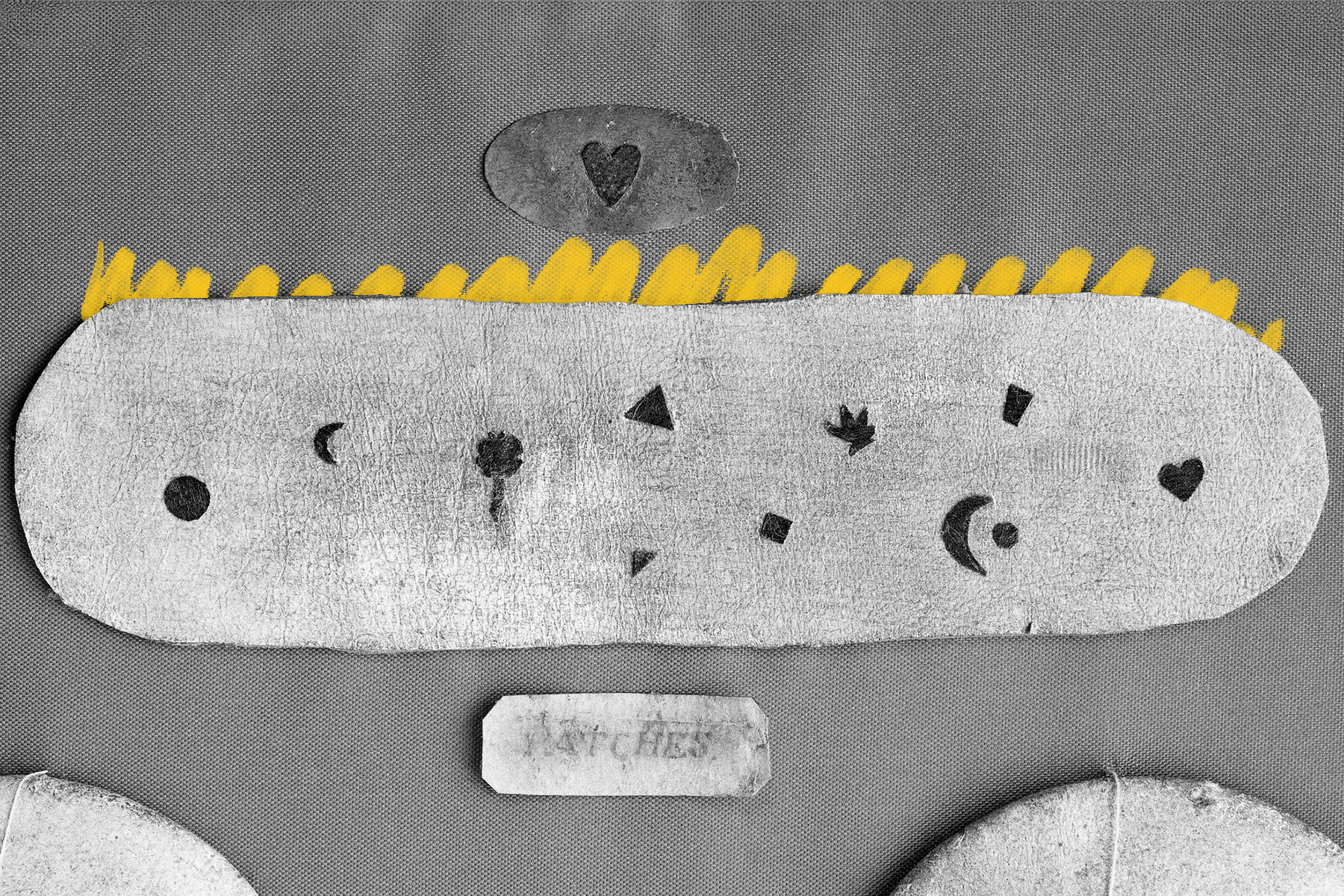French aristocrats wore a version of pimple stickers.
We are, perhaps, currently in the cutest era of acne treatment. Rather than attempting to hide a pimple, many people are leaning into the imperfection by using fun, colorful hydrocolloid stickers that both cover and treat the blemish. While this trend emerged in the last decade or so, it’s not the first time cute acne accessories have been in vogue — not by a long shot.
Decorative blemish covers called mouches were all the rage in France at the end of the 16th century. Cute little shapes such as hearts, crescent moons, and diamonds were cut from silk, taffeta, velvet, or satin, and often backed with adhesive before sale. But it wasn’t just acne that these early users were worried about: Smallpox and syphilis were abundant, and both left serious scarring behind.
The bold patches went well with the ostentatious makeup popular among the French aristocracy at the time, including white hair powder, white face paint, and dramatic rouge. Just as today’s adorable pimple patches are sometimes worn just for fun, mouches started appearing on unblemished skin — and sometimes in meaningful locations. Wearing one on the right cheek, for example, would communicate that you were married, while the left cheek meant engaged. Mouches weren’t the first complexion stickers, either. Ancient Romans would stick small leather dots called splenia or alutae to their faces to cover blemishes — and, as with the patches of Renaissance-era France and today, people eventually started wearing them for fun.







